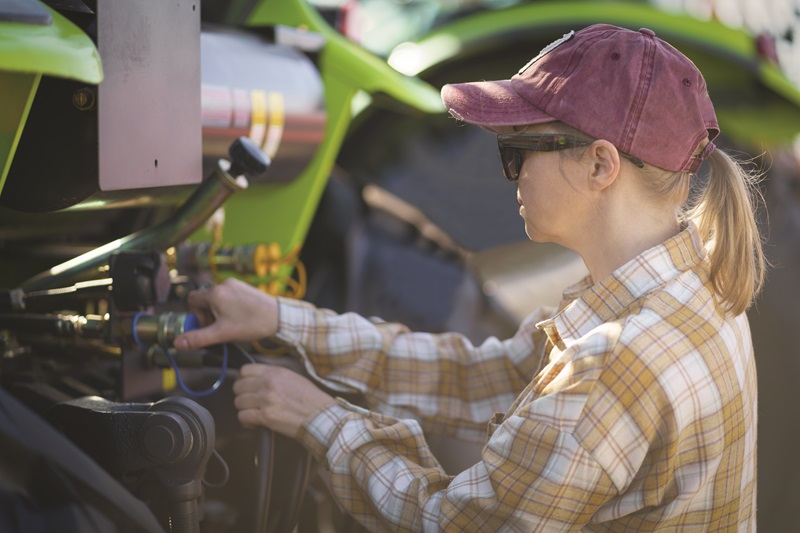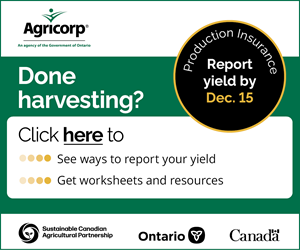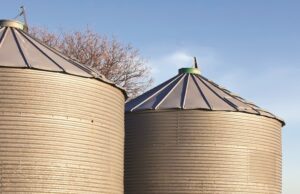Modifications and repairs
‘RIGHT TO REPAIR’ RISKS AND OPPORTUNITIES.

THE RIGHT TO REPAIR MACHINERY LADEN WITH SENSORS AND COMPUTER SYSTEMS HAS BEEN A CONTENTIOUS ISSUE FOR SOME TIME. While advocates say it’s important for farmers to be able to fix their equipment quickly and in the way they deem appropriate, detractors argue full in-field repair capability can generate safety risks.
In a June panel discussion hosted by the Canadian Agriculture Safety Association (CASA), three industry experts – Howard Maines from the Canadian Public Policy Advisory Association of Equipment Manufacturers, Karl Klotzbach, owner of LH2K Technology and veteran of the machinery development industry, and Dion McGrath, executive director of the Agricultural Producers Association of Saskatchewan – discussed the difference between repairing and modifying, the importance of arming oneself with the right technical information, warranty limitations, and safety risks relevant to the right to repair discussion.
BACKGROUND
Right-to-repair refers to the right of individuals to make changes or fix technologies such as smartphones and farm machinery. In some cases, Original Equipment Manufacturers (OEMs) have restricted access to key components or aspects of a technology.
In the agriculture sector, the issue revolves around an individual’s ability to fix equipment when breakdowns occur – self-repair or by a person not certified by the OEM. There are two main considerations – whether repairs or changes made violate the warranty on a particular machine and whether those same repairs or changes increase safety risks. The latter question is particularly pertinent in cases where operators have argued for the right to modify equipment, not just repair.
In October 2023, Canada’s House of Commons passed Bill C-244, supporting the right to repair. This bill changes the Copyright Act, allowing people to work around technological protections built into machinery.
GETTING THE RIGHT INFORMATION
The CASA webinar panellists expressed similar but somewhat divergent interpretations of the right to repair. For Maines, it means being able to repair machinery quickly and efficiently. McGrath prioritized operator empowerment, freedom, and safety while not ignoring intellectual property rights. Klotzbach highlights the need to consider who is responsible for diagnosing problems and warranty considerations of taking action should the repair have unanticipated impacts.
With modern farm machinery now featuring millions of coding lines, however, all three referenced the importance of having the right knowledge to make those repairs safely. With that knowledge, machinery owners and operators should have the freedom to either make repairs themselves or seek assistance from those who do.
“Folks who want to repair their own stuff need to have the right tools, the right information, the means to access original manufacturing parts, the repair manuals, the right equipment, and the proper guidelines to do all that stuff. Having access to the information is absolutely essential to making sure the machinery is kept safe, in working order and any repairs that are made are at the same high standard that the manufacturer set out,” says McGrath. “The right to repair for farmers is really about making sure they maintain their choice and keep an active repair market available to them so they’re not stuck with one repair provider.”
“We do believe manufacturers do have a huge role to play in education and training environment, so whether it is farmers or independent technicians, they have the knowledge to reduce the risk associated with repairs…Innovation should not be making repairs harder or more inaccessible.”
According to Maines, farmers can access the information they need to make repairs through company websites, mobile apps, and technicians – the latter being a profession in dire need of more people. Klotzbach says that, while YouTube (and the internet more broadly) does mean the information required to fix farm machinery is more readily available, training is still important in many cases. This is part of the reason equipment manufacturers include warranty caveats for some parts.
“If it’s something more complex, take it to your dealer. Use genuine parts that the manufacturer supports,” says Klotzbach.
“There are a lot of knock-offs and parts available on the internet that, certainly price is an important consideration, but are you actually getting the right part? Is it going to perform?”
Making safe repairs, in short, requires competency. When asked what a “competent” farmer might look like, McGrath described someone who knows what information they require, keeps good records, understands warranty limitations, and other factors.
“If I’m not competent to repair my own computer at home, I’m probably not competent enough to repair the computer in my tractor or combine either,” he says.
Similarly, Klotzbach adds that a competent farmer is also someone who knows what their limitations are, who is willing to outsource repairs if needed, or seek training to further their own capabilities.
INTEROPERABILITY CONCERNS
The lack of interoperability between different equipment brands has long been a source of frustration for some farmers. Allowing consumers the right to bypass some digital locks – such as that proposed in Bill C-244 – could change this.
However, Klotzbach reiterates that manufacturers will “draw the line” at actions that circumvent safety features. McGrath says “timing is everything” when it comes to resolving equipment problems and that timing of repairs factors into many safety issues.
“A repair that happens to your combine at harvest – clearly, there’s a huge sense of urgency and anxiety that goes along with getting that piece of equipment back up and running…The sense of urgency, the economic necessity and livelihoods are at stake, and the right to repair helps encourage a diverse repair market to get these things done quickly, affordably, and in a means that works for any particular producer at any particular time.”
REPAIR – OR MODIFICATION?
The difference between repair and modification is critical. Maines says while manufacturers support repairs, they often do not support modifications. Increasing the horsepower of a tractor, for example, can be dangerous. It can also be unfair to any subsequent buyers of the machine, who may not realize the modification has been made.
“About 33 per cent of the equipment that comes in on trade now has either been [modified] or had delete systems installed to disable the diesel emission fluid requirements of the engines. Those are modifications to the operating system. That’s not a repair.”
Klotzbach says modifications – often called “chipping” – have often been associated with operators trying to bypass emission sensors. The consequences of doing so are often a failure to meet engine emissions rates designed by the manufacturer while also incurring reduced performance and greater fuel consumption.
“The other part of chipping is trying to get enhanced performance, getting more power out of that engine,” says Klotzbach.
“You’re putting more power to those drives. And those drives are more susceptible to failure, possible catastrophic failure because they’re not designed to handle that kind of power. The outcome of that is more broken parts, and sooner, and maybe it creates an unsafe situation. It’s all a very delicate balance in the design.” •



























